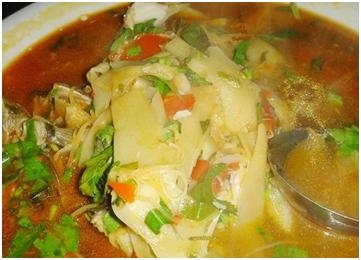代做COMP9414、代寫C++,Java程序語言
時(shí)間:2024-06-20 來源: 作者: 我要糾錯(cuò)
COMP9414 24T2
Artificial Intelligence
Assignment 1 - Artificial neural networks
Due: Week 5, Wednesday, 26 June 2024, 11:55 PM.
1 Problem context
Time Series Air Quality Prediction with Neural Networks: In this
assignment, you will delve into the realm of time series prediction using neural
network architectures. You will explore both classification and estimation
tasks using a publicly available dataset.
You will be provided with a dataset named “Air Quality,” [1] available
on the UCI Machine Learning Repository 1. We tailored this dataset for this
assignment and made some modifications. Therefore, please only use the
attached dataset for this assignment.
The given dataset contains 8,358 instances of hourly averaged responses
from an array of five metal oxide chemical sensors embedded in an air qual-
ity chemical multisensor device. The device was located in the field in a
significantly polluted area at road level within an Italian city. Data were
recorded from March 2004 to February 2005 (one year), representing the
longest freely available recordings of on-field deployed air quality chemical
sensor device responses. Ground truth hourly averaged concentrations for
carbon monoxide, non-methane hydrocarbons, benzene, total nitrogen ox-
ides, and nitrogen dioxide among other variables were provided by a co-
located reference-certified analyser. The variables included in the dataset
1https://archive.ics.uci.edu/dataset/360/air+quality
1
are listed in Table 1. Missing values within the dataset are tagged
with -200 value.
Table 1: Variables within the dataset.
Variable Meaning
CO(GT) True hourly averaged concentration of carbon monoxide
PT08.S1(CO) Hourly averaged sensor response
NMHC(GT) True hourly averaged overall Non Metanic HydroCar-
bons concentration
C6H6(GT) True hourly averaged Benzene concentration
PT08.S2(NMHC) Hourly averaged sensor response
NOx(GT) True hourly averaged NOx concentration
PT08.S3(NOx) Hourly averaged sensor response
NO2(GT) True hourly averaged NO2 concentration
PT08.S4(NO2) Hourly averaged sensor response
PT08.S5(O3) Hourly averaged sensor response
T Temperature
RH Relative Humidity
AH Absolute Humidity
2 Activities
This assignment focuses on two main objectives:
? Classification Task: You should develop a neural network that can
predict whether the concentration of Carbon Monoxide (CO) exceeds
a certain threshold – the mean of CO(GT) values – based on historical
air quality data. This task involves binary classification, where your
model learns to classify instances into two categories: above or below
the threshold. To determine the threshold, you must first calculate
the mean value for CO(GT), excluding unknown data (missing values).
Then, use this threshold to predict whether the value predicted by your
network is above or below it. You are free to choose and design your
own network, and there are no limitations on its structure. However,
your network should be capable of handling missing values.
2
? Regression Task: You should develop a neural network that can pre-
dict the concentration of Nitrogen Oxides (NOx) based on other air
quality features. This task involves estimating a continuous numeri-
cal value (NOx concentration) from the input features using regression
techniques. You are free to choose and design your own network and
there is no limitation on that, however, your model should be able to
deal with missing values.
In summary, the classification task aims to divide instances into two cat-
egories (exceeding or not exceeding CO(GT) threshold), while the regression
task aims to predict a continuous numerical value (NOx concentration).
2.1 Data preprocessing
It is expected you analyse the provided data and perform any required pre-
processing. Some of the tasks during preprocessing might include the ones
shown below; however, not all of them are necessary and you should evaluate
each of them against the results obtained.
(a) Identify variation range for input and output variables.
(b) Plot each variable to observe the overall behaviour of the process.
(c) In case outliers or missing data are detected correct the data accord-
ingly.
(d) Split the data for training and testing.
2.2 Design of the neural network
You should select and design neural architectures for addressing both the
classification and regression problem described above. In each case, consider
the following steps:
(a) Design the network and decide the number of layers, units, and their
respective activation functions.
(b) Remember it’s recommended your network accomplish the maximal
number of parameters Nw < (number of samples)/10.
(c) Create the neural network using Keras and TensorFlow.
3
2.3 Training
In this section, you have to train your proposed neural network. Consider
the following steps:
(a) Decide the training parameters such as loss function, optimizer, batch
size, learning rate, and episodes.
(b) Train the neural model and verify the loss values during the process.
(c) Verify possible overfitting problems.
2.4 Validating the neural model
Assess your results plotting training results and the network response for the
test inputs against the test targets. Compute error indexes to complement
the visual analysis.
(a) For the classification task, draw two different plots to illustrate your
results over different epochs. In the first plot, show the training and
validation loss over the epochs. In the second plot, show the training
and validation accuracy over the epochs. For example, Figure 1 and
Figure 2 show loss and classification accuracy plots for 100 epochs,
respectively.
Figure 1: Loss plot for the classifica-
tion task
Figure 2: Accuracy plot for the clas-
sification task
4
(b) For the classification task, compute a confusion matrix 2 including True
Positive (TP), True Negative (TN), False Positive (FP), and False Neg-
ative (FN), as shown in Table 2. Moreover, report accuracy and pre-
cision for your test data and mention the number of tested samples as
shown in Table 3 (the numbers shown in both tables are randomly cho-
sen and may not be consistent with each other). For instance, Sklearn
library offers a various range of metric functions 3, including confusion
matrix 4, accuracy, and precision. You can use Sklearn in-built met-
ric functions to calculate the mentioned metrics or develop your own
functions.
Table 2: Confusion matrix for the test data for the classification task.
Confusion Matrix Positive (Actual) Negative (Actual)
Positive (Predicted) 103 6
Negative (Predicted) 6 75
Table 3: Accuracy and precision for the test data for the classification task.
Accuracy Precision Number of Samples
CO(GT) classification 63% 60% 190
(c) For the regression task, draw two different plots to illustrate your re-
sults. In the first plot, show how the selected loss function varies for
both the training and validation through the epochs. In the second
plot, show the final estimation results for the validation test. For in-
stance, Figure 3 and Figure 4 show the loss function and the network
outputs vs the actual NOx(GT) values for a validation test, respec-
tively. In Figure 4 no data preprocessing has been performed, however,
as mentioned above, it is expected you include this in your assignment.
(d) For the regression task, report performance indexes including the Root
Mean Squared Error (RMSE), Mean Absolute Error (MAE) (see a
discussion on [2]), and the number of samples for your estimation of
2https://en.wikipedia.org/wiki/Confusion matrix
3https://scikit-learn.org/stable/api/sklearn.metrics.html
4https://scikitlearn.org/stable/modules/generated/sklearn.metrics.confusion matrix.html
5
Figure 3: Loss plot for the re-
gression task.
Figure 4: Estimated and actual NOx(GT)
for the validation set.
NOx(GT) values in a table. Root Mean Squared Error (RMSE) mea-
sures the differences between the observed values and predicted ones
and is defined as follows:
RMSE =
√
1
n
Σi=ni=1 (Yi ? Y?i)2, (1)
where n is the number of our samples, Yi is the actual label and Y?i
is the predicted value. In the same way, MAE can be defined as the
absolute average of errors as follows:
MAE =
1
n
Σi=ni=1 |Yi ? Y?i|. (2)
Table 4 shows an example of the performance indexes (all numbers are
randomly chosen and may not be consistent with each other). As men-
tioned before, Sklearn library offers a various range of metric functions,
including RMSE5 and MAE 6. You can use Sklearn in-built metric func-
tions to calculate the mentioned metrics or develop your own functions.
Table 4: Result table for the test data for the regression task.
RMSE MAE Number of Samples
90.60 50.35 55
5https://scikit-learn.org/stable/modules/generated/sklearn.metrics.root mean squared error.html
6https://scikit-learn.org/stable/modules/generated/sklearn.metrics.mean absolute error.html
6
3 Testing and discussing your code
As part of the assignment evaluation, your code will be tested by tutors along
with you in a discussion session carried out in the tutorial session in week 6.
The assignment has a total of 25 marks. The discussion is mandatory and,
therefore, we will not mark any assignment not discussed with tutors.
You are expected to propose and build neural models for classification
and regression tasks. The minimal output we expect to see are the results
mentioned above in Section 2.4. You will receive marks for each of these
subsection as shown in Table 5, i.e. 7 marks in total. However, it’s fine if
you want to include any other outcome to highlight particular aspects when
testing and discussing your code with your tutor.
For marking your results, you should be prepared to simulate your neural
model with a generalisation set we have saved apart for that purpose. You
must anticipate this by including in your submission a script ready to open
a file (with the same characteristics as the given dataset but with fewer data
points), simulate the network, and perform all the validation tests described
in Section 2.4 (b) and (d) (accuracy, precision, RMSE, MAE). It is recom-
mended to save all of your hyper-parameters and weights (your model in
general) so you can call your network and perform the analysis later in your
discussion session.
As for the classification task, you need to compute accuracy and precision,
while for the regression task RMSE and MAE using the generalisation set.
You will receive 3 marks for each task, given successful results. Expected
results should be as follows:
? For the classification task, your network should achieve at least 85%
accuracy and precision. Accuracy and precision lower than that will
result in a score of 0 marks for that specific section.
? For the regression task, it is expected to achieve an RMSE of at most
280 and an MAE of 220 for unseen data points. Errors higher than the
mentioned values will be marked as 0 marks.
Finally, you will receive 1 mark for code readability for each task, and
your tutor will also give you a maximum of 5 marks for each task depending
on the level of code understanding as follows: 5. Outstanding, 4. Great,
3. Fair, 2. Low, 1. Deficient, 0. No answer.
7
Table 5: Marks for each task.
Task Marks
Results obtained with given dataset
Loss and accuracy plots for classification task 2 marks
Confusion matrix and accuracy and precision tables for classifi-
cation task
2 marks
Loss and estimated NOx(GT) plots for regression task 2 marks
Performance indexes table for regression task 1 mark
Results obtained with generalisation dataset
Accuracy and precision for classification task 3 marks
RMSE and MAE for regression task 3 marks
Code understanding and discussion
Code readability for classification task 1 mark
Code readability for regression task 1 mark
Code understanding and discussion for classification task 5 mark
Code understanding and discussion for regression task 5 mark
Total marks 25 marks
4 Submitting your assignment
The assignment must be done individually. You must submit your assignment
solution by Moodle. This will consist of a single .ipynb Jupyter file. This file
should contain all the necessary code for reading files, data preprocessing,
network architecture, and result evaluations. Additionally, your file should
include short text descriptions to help markers better understand your code.
Please be mindful that providing clean and easy-to-read code is a part of
your assignment.
Please indicate your full name and your zID at the top of the file as a
comment. You can submit as many times as you like before the deadline –
later submissions overwrite earlier ones. After submitting your file a good
practice is to take a screenshot of it for future reference.
Late submission penalty: UNSW has a standard late submission
penalty of 5% per day from your mark, capped at five days from the as-
sessment deadline, after that students cannot submit the assignment.
8
5 Deadline and questions
Deadline: Week 5, Wednesday 26 June of June 2024, 11:55pm. Please
use the forum on Moodle to ask questions related to the project. We will
prioritise questions asked in the forum. However, you should not share your
code to avoid making it public and possible plagiarism. If that’s the case,
use the course email cs9414@cse.unsw.edu.au as alternative.
Although we try to answer questions as quickly as possible, we might take
up to 1 or 2 business days to reply, therefore, last-moment questions might
not be answered timely.
6 Plagiarism policy
Your program must be entirely your own work. Plagiarism detection software
might be used to compare submissions pairwise (including submissions for
any similar projects from previous years) and serious penalties will be applied,
particularly in the case of repeat offences.
Do not copy from others. Do not allow anyone to see your code.
Please refer to the UNSW Policy on Academic Honesty and Plagiarism if you
require further clarification on this matter.
References
[1] De Vito, S., Massera, E., Piga, M., Martinotto, L. and Di Francia, G.,
2008. On field calibration of an electronic nose for benzene estimation in an
urban pollution monitoring scenario. Sensors and Actuators B: Chemical,
129(2), pp.750-757.
[2] Hodson, T. O. 2022. Root mean square error (RMSE) or mean absolute
error (MAE): When to use them or not. Geoscientific Model Development
Discussions, 2022, 1-10.
請(qǐng)加QQ:99515681 郵箱:99515681@qq.com WX:codinghelp
標(biāo)簽:
掃一掃在手機(jī)打開當(dāng)前頁
注:本網(wǎng)條致力提供真實(shí)有用信息,所轉(zhuǎn)載的內(nèi)容,其版權(quán)均由原作者和資料提供方所擁有!若有任何不適煩請(qǐng)聯(lián)系我們,將會(huì)在24小時(shí)內(nèi)刪除。
昆明生活資訊
推薦信息
相關(guān)文章
欄目更新















